Introduction
Navigating the complexities of business debt requires a strategic and informed approach. Recognizing the various types of debt, conducting thorough assessments, and creating structured repayment plans are essential steps for effective financial management. This article delves into practical methods for understanding and managing your company's debt, offering insights into improving cash flow, negotiating better terms with creditors, and leveraging technology for efficiency.
Additionally, it underscores the importance of continuous monitoring and seeking professional advice to ensure long-term financial stability. Equip your business with the tools and knowledge necessary to tackle debt head-on and secure a healthier financial future.
Understanding Your Debt
Identifying the kinds of obligations your business possesses is essential for efficient financial management. It involves distinguishing between secured and unsecured financial obligations, as well as short-term and long-term commitments. For instance, venture financing is a type of funding provided to startups and growth-stage companies, typically needing repayment within three to five years. This kind of obligation often comes with a higher interest rate than traditional bank loans but does not require giving up equity or board control. Understanding these distinctions helps in prioritizing repayment strategies and managing risks. A thorough strategy for managing obligations can greatly influence cash flow, liquidity, and overall economic stability.
Assessing and Analyzing Your Current Debt Situation
Start by performing a thorough assessment of your existing financial obligations. Gather all pertinent monetary documents, such as statements, loan agreements, and credit card bills. Calculate the total debt, interest rates, payment schedules, and outstanding balances. This detailed analysis offers a clear understanding of your monetary obligations, enabling you to make informed decisions. By identifying underperforming areas or products through this review, you can strategize effectively—whether it's discontinuing certain products or finding new ways to enhance their performance. This thorough assessment is crucial in crafting a strategic budget and managing cash flow effectively, ensuring the economic health and stability of your business.
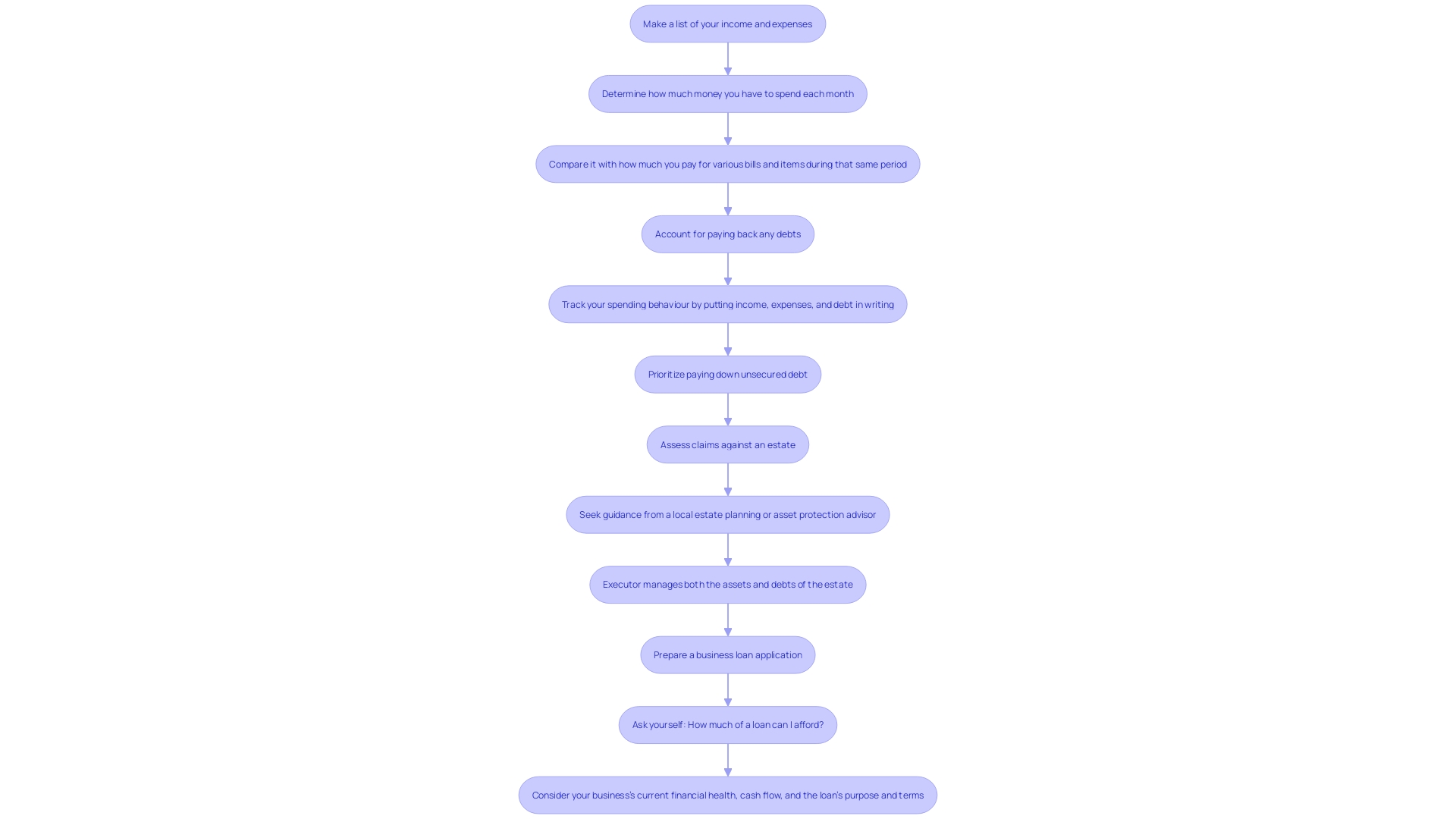
Creating a Structured Repayment Plan
Creating a structured repayment plan is essential for effective financial management. Begin by conducting a comprehensive analysis of your company's monetary statements, including balance sheets, income statements, and cash flow statements. This will assist you in pinpointing the fundamental reasons for financial struggles, such as high current borrowing levels or liquidity problems. 'Prioritize obligations with the highest interest rates or those significantly affecting your cash flow.'. Set realistic monthly payment objectives and establish clear timelines for financial reduction.
For instance, Dow Jones and The Wall Street Journal's WSJ 2020 initiative successfully restructured their financial obligations to focus on a more digitally-oriented approach, enhancing operational efficiency and stability. Similarly, employing strategies such as the snowball or avalanche methods can systematically address financial obligations. The snowball approach, made famous by Dave Ramsey, consists of arranging financial obligations from smallest to largest and concentrating on settling the smallest amounts first. In contrast, the avalanche method focuses on obligations with the highest interest rates first, aiming to diminish the overall interest paid over time.
By adhering to these steps and utilizing established strategies, you can enhance your company's monetary well-being and maneuver through the intricacies of obligation oversight with assurance.
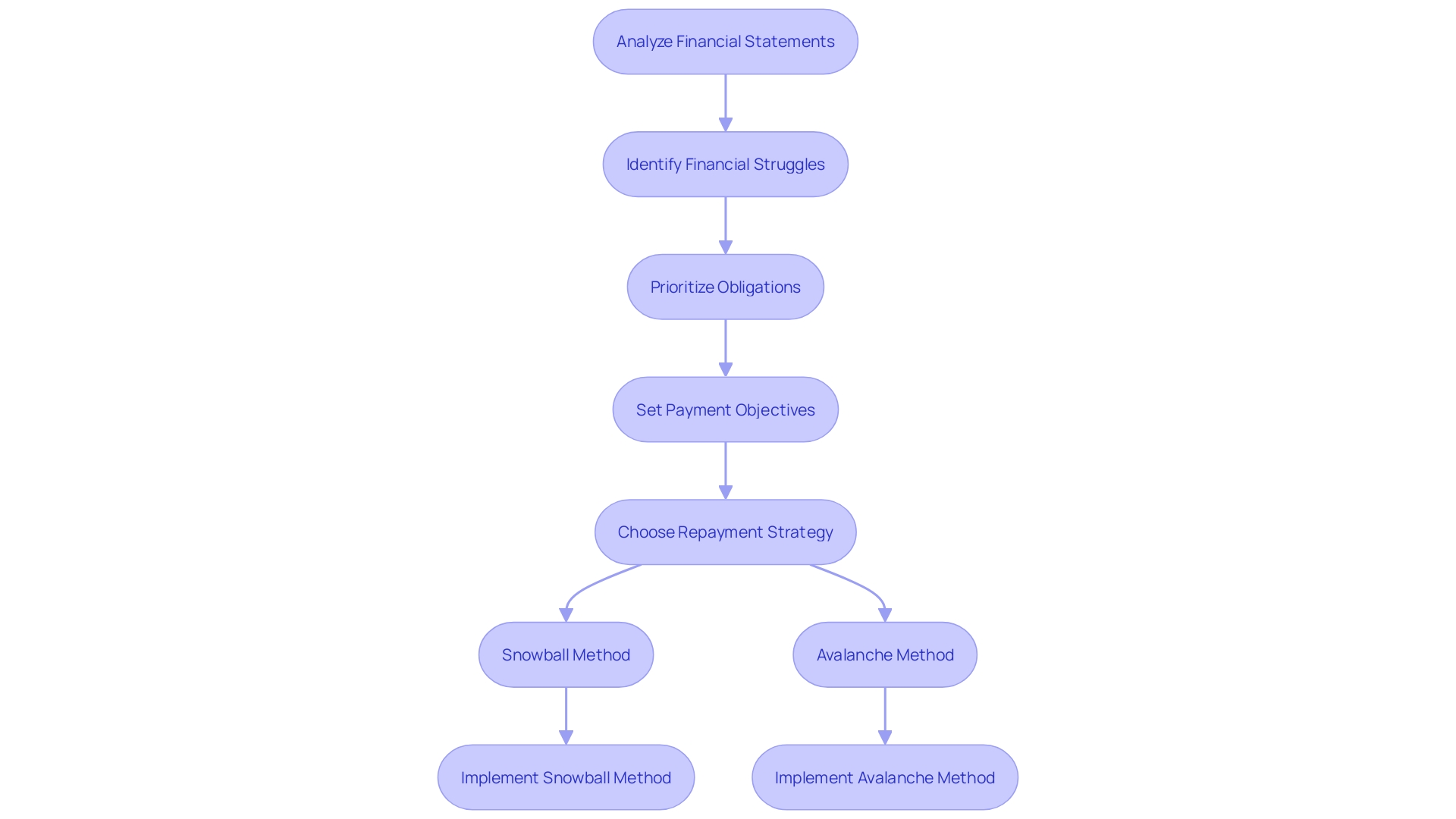
Improving Cash Flow for Debt Management
Enhancing cash flow is paramount for effective debt management. To accomplish this, small and medium-sized enterprises (SMEs) should begin by reevaluating their existing monetary practices. A significant portion of SMBs, particularly in industries like agriculture, manufacturing, and professional services, still rely on outdated manual methods such as spreadsheets and paper records, which can lead to inefficiencies and errors. According to recent studies, 60% of enterprises face ongoing challenges in managing cash flow, with delayed invoicing and payments being major issues.
Updating your money management processes by investing in technology can significantly enhance productivity and precision. For instance, 32% of companies that embraced new accounting software reported improved productivity, while 28% experienced greater efficiencies. Implementing automated billing systems can ensure timely invoicing and payments, reducing the risk of cash flow disruptions.
Furthermore, diversifying revenue streams and optimizing inventory levels can further enhance your economic position. By integrating these strategies, SMBs can reduce their dependency on credit and better meet their debt obligations. As emphasized by economic specialists, a comprehensive examination of your monetary statements can identify areas for enhancement, aiding in the development of a more robust and lucrative business model.
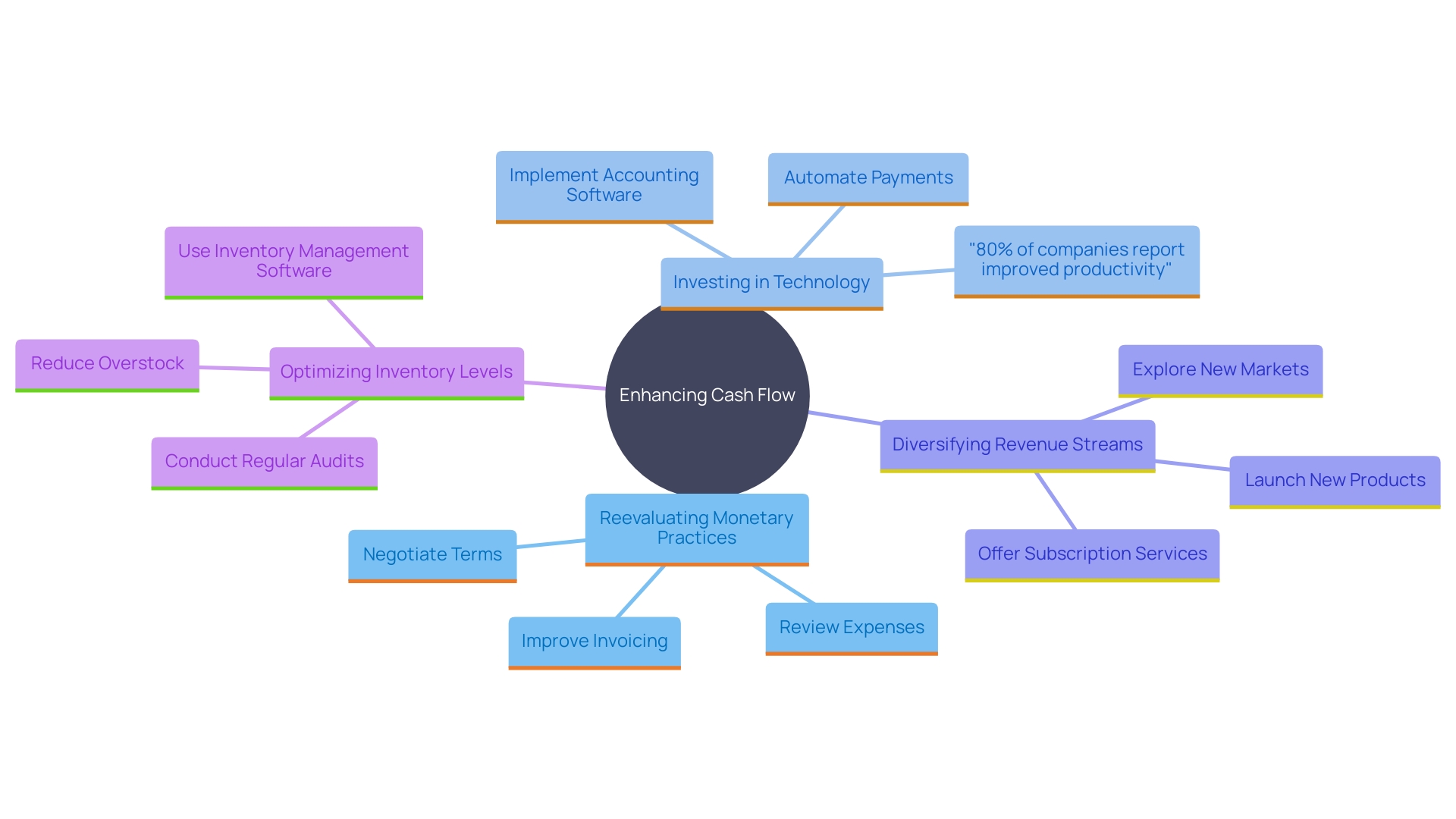
Negotiating Better Terms with Creditors
Participating in discussions with creditors can greatly enhance your monetary situation. When negotiating, aim to secure lower interest rates, extended payment terms, or even partial debt forgiveness. Thoroughly understand your financial situation before initiating discussions, and present a detailed repayment plan that underscores your commitment. 'Effective negotiations can be a game-changer for your enterprise, as highlighted by experts like Ami Kassar, who emphasize the importance of self-management and strategic decision-making in these processes.'. Research indicates that many small businesses face cash flow issues, often exacerbated by high costs associated with cash advances compared to accounts receivable financing. Thus, contacting creditors with a strong plan can not only ease immediate financial burdens but also establish a basis for improved financial oversight and growth.
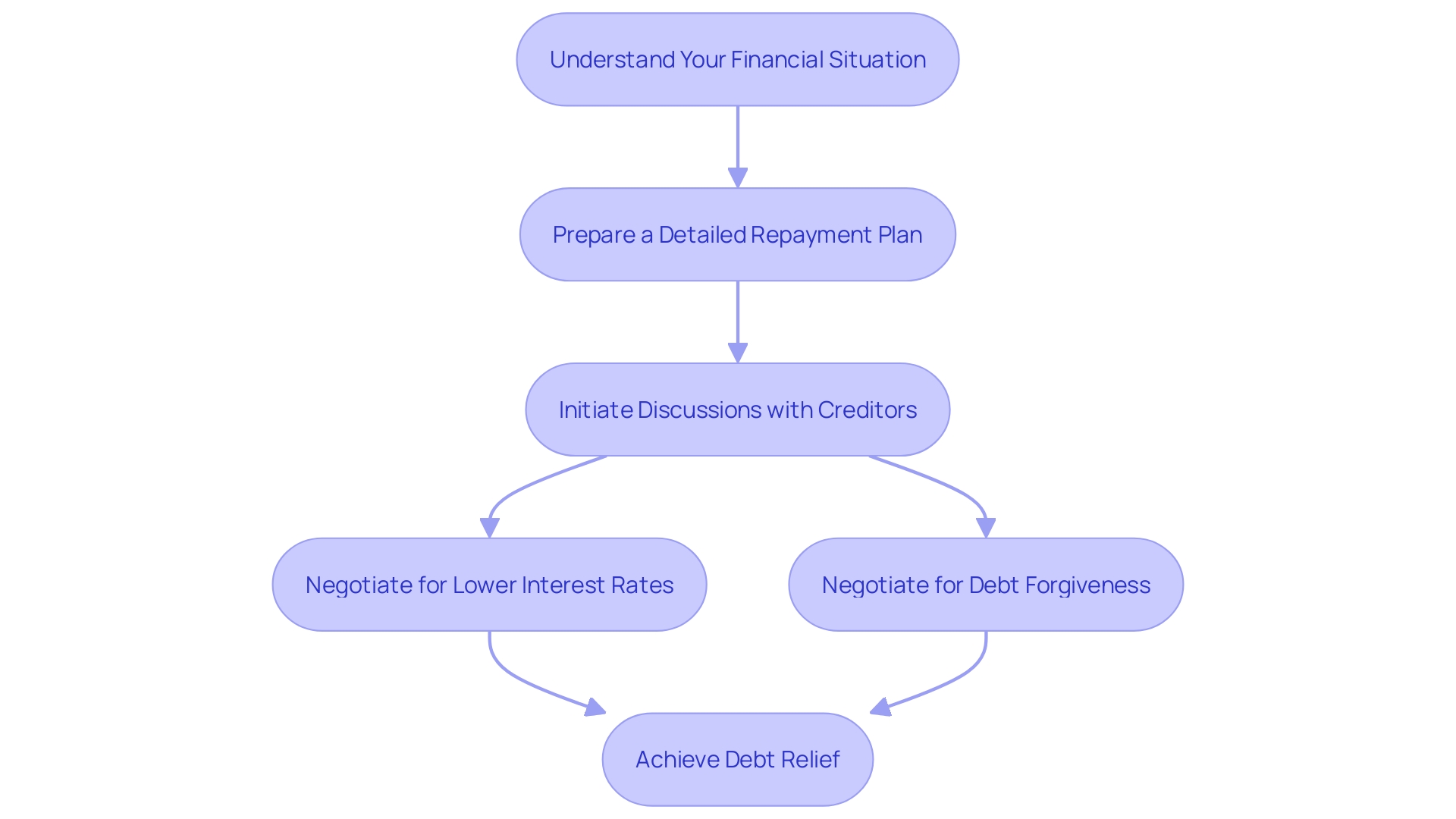
Using Technology for Efficient Debt Management
Utilize technology to improve your debt handling process. According to a recent report, almost half of small and medium-sized enterprises in various industries still rely on manual processes like spreadsheets and paper records to manage their cash flow. 'This absence of automation results in considerable obstacles, with 60% of enterprises grappling with cash flow oversight, 30% encountering delays in invoicing and payments, and 26% having trouble handling accounts receivable/payable.'.
Utilizing accounting software can simplify these tasks by tracking expenses, scheduling payments, and monitoring cash flow effectively. Tools like Expensify, which offers features such as expense tracking, invoicing, and bill pay, can streamline your monetary operations, saving time and reducing the risk of missed payments. Investing in such technology not only improves productivity but also enhances data management and creates operational efficiencies.
Furthermore, automation in monetary operations holds immense potential. According to Accenture, up to 80% of monetary tasks could be automated, freeing up valuable time for employees to focus on strategic initiatives and customer satisfaction. By adopting these advanced tools and technologies, businesses can navigate the uncertainties of the economic landscape more effectively and ensure long-term stability.
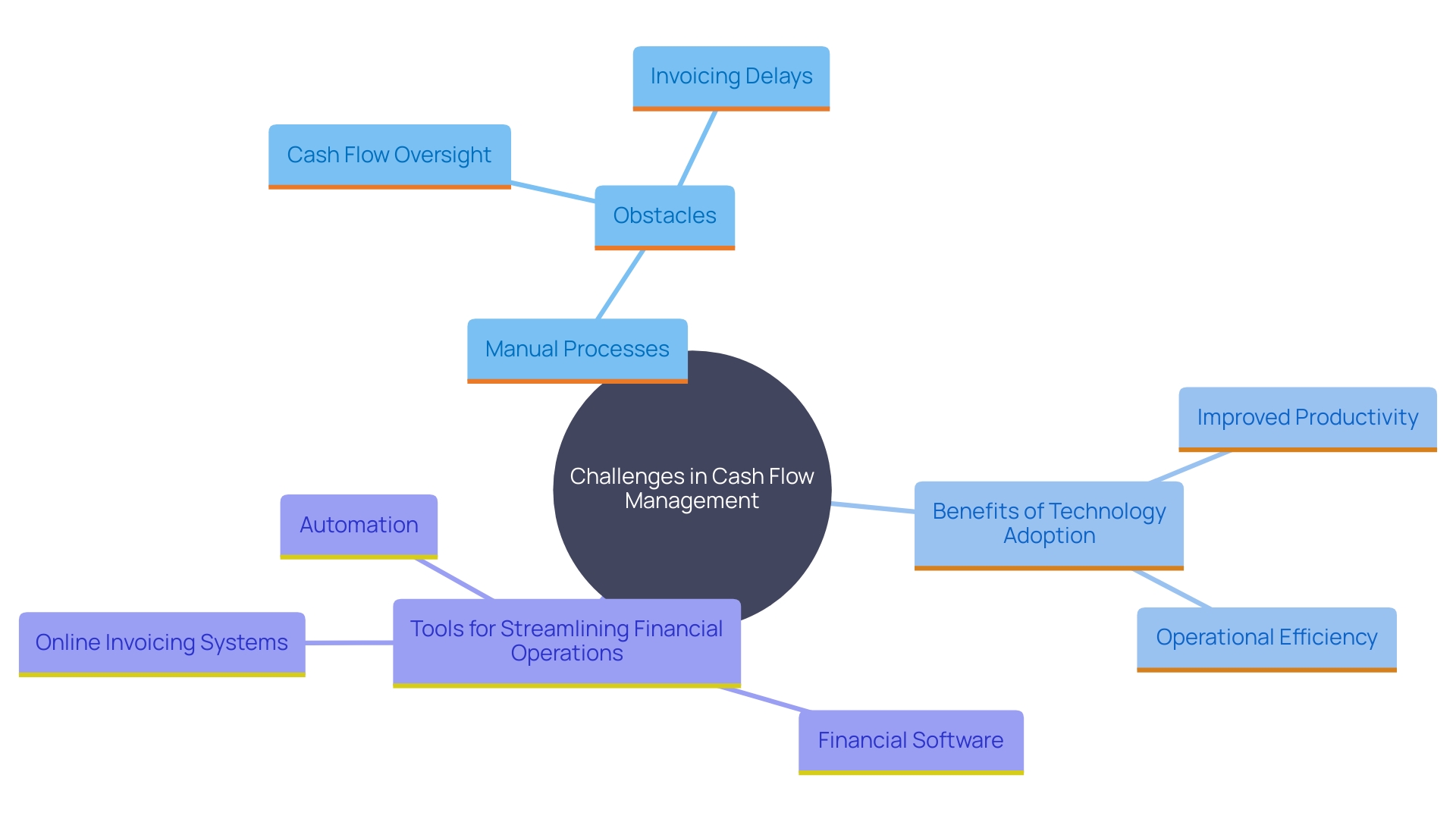
Monitoring and Evaluating Debt Management Strategies
Regularly tracking your debt management strategies is essential to ensure their effectiveness. Establish periodic reviews of your monetary statements and repayment progress to stay ahead. Utilizing key performance indicators (KPIs) such as debt-to-equity ratio, interest coverage ratio, and cash flow analysis can provide invaluable insights. These metrics will help you measure success and make data-driven decisions.
In a similar vein, the Denver Public Library's Strategy and Evaluation Team emphasizes collaboration and innovation to improve service efficiency. By identifying potential risks and implementing strategic plans, they ensure their initiatives remain on track. This approach can be reflected in your enterprise to uphold economic stability.
Additionally, adopting an impact accounting approach, as highlighted by Sir Ronald Cohen, can offer a comprehensive view of your financial health by considering both risk and return. This method encourages organizations to optimize their strategies for better outcomes.
Statistics from the GAO underscore the importance of continuous evaluation and adaptation. For instance, the Small Business Administration implemented key recommendations that significantly improved government operations. This demonstrates the value of regular assessments in achieving substantial improvements.
In summary, utilizing KPIs, regular assessments, and creative methods such as impact accounting can keep your financial strategies effective and aligned with your business objectives.
Seeking Professional Advice
'When financial obligations become unmanageable, seeking professional guidance is a prudent step.'. Interacting with monetary advisors or credit management specialists can provide customized approaches suited to your unique situation. These experts can play an essential part in discussing terms with creditors, possibly reorganizing your obligations to improve economic stability. For instance, one Vox reader, a freelancer grappling with fluctuating income and significant credit card obligations, found professional guidance invaluable in addressing their monetary challenges. Moreover, almost 70% of Canadians favor a hybrid method, merging human advisors with generative AI, highlighting the significance of the human aspect in decision-making regarding finances. As financial landscapes evolve, staying informed and leveraging expert advice can be key to navigating debt management effectively.
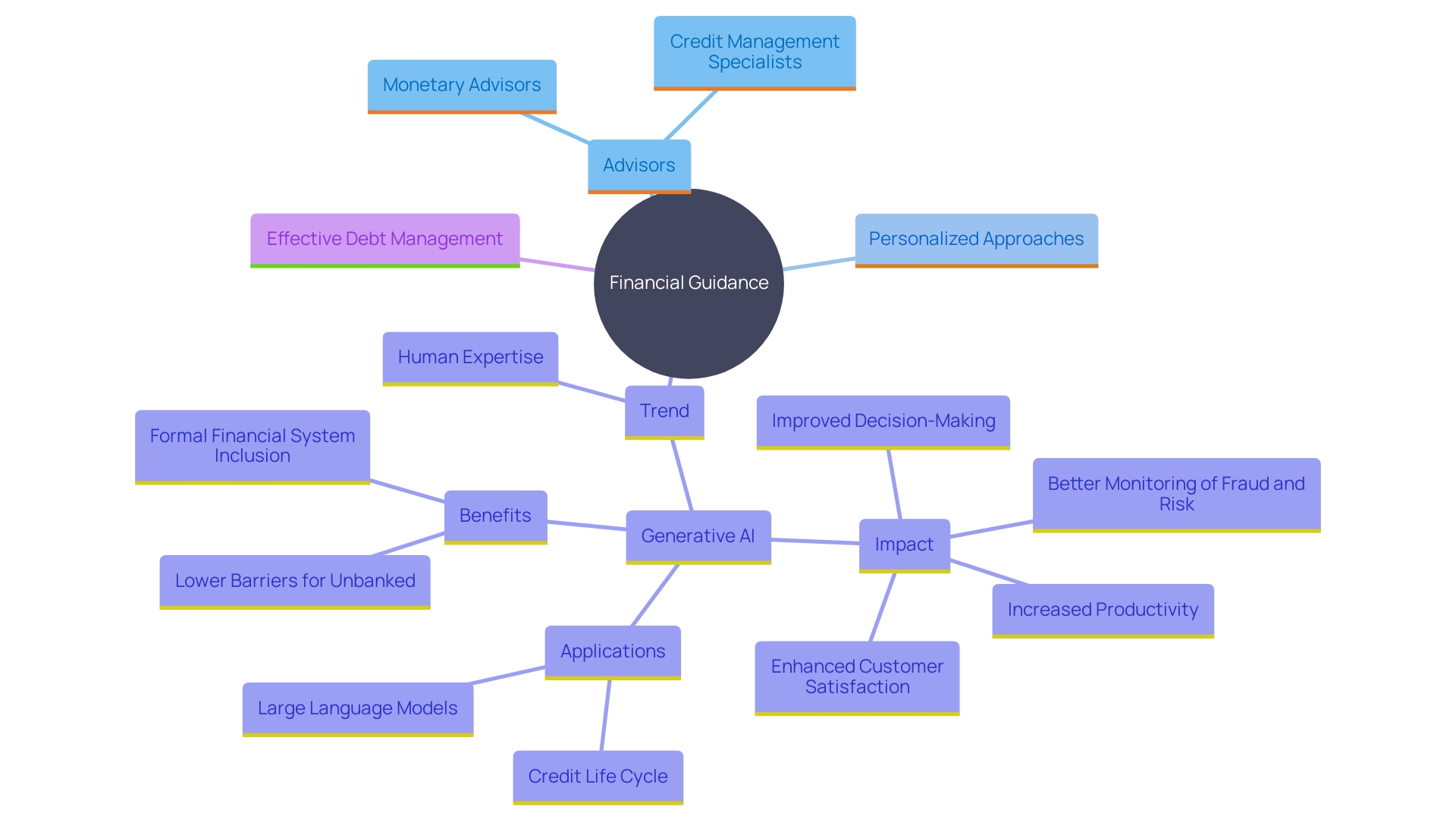
Conclusion
Managing business debt effectively hinges on a strategic and informed approach. Understanding the various types of debt—secured versus unsecured and short-term versus long-term—lays the groundwork for developing effective repayment strategies. Conducting a thorough assessment of current debt, including a review of financial documents, allows businesses to identify improvement areas and make informed decisions.
A structured repayment plan is vital for financial health. Prioritizing debts based on interest rates and cash flow impact ensures efficient resource allocation. Improving cash flow through modern practices and technology adoption enhances a company's ability to meet its obligations, while streamlined invoicing and diversified revenue streams strengthen overall financial stability.
Negotiating with creditors can yield better terms, relieving immediate pressures and establishing a foundation for future growth. Additionally, leveraging technology for efficient debt management streamlines operations, allowing a focus on strategic initiatives.
Regular monitoring and evaluation of debt management strategies keep businesses agile in a dynamic financial landscape. Utilizing key performance indicators and innovative accounting approaches ensures alignment with business goals. When debt challenges become overwhelming, seeking professional advice can provide tailored solutions that enhance long-term stability.
In summary, a proactive approach to debt management—characterized by understanding, strategic planning, and technology utilization—can pave the way for a healthier financial future, enabling businesses to navigate challenges and position themselves for sustainable growth.




